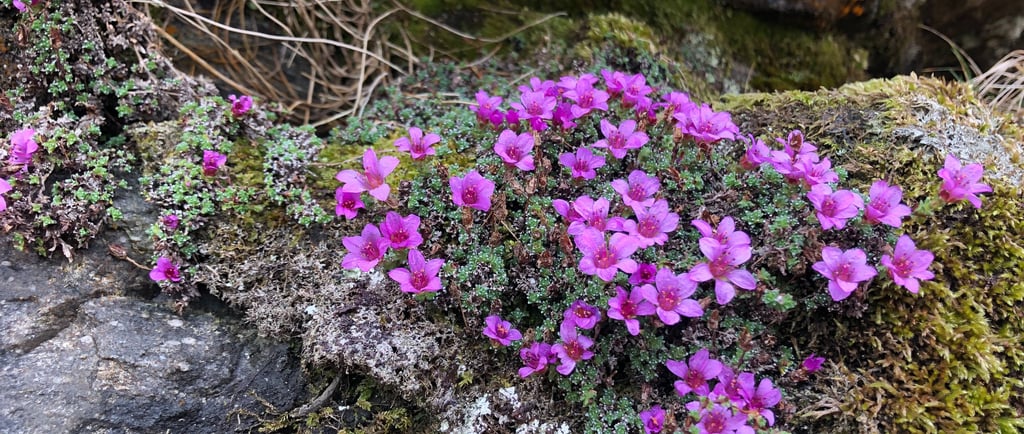Saxifraga oppositifolia
Purple saxifrage
ANGIOSPERMSARCTIC-ALPINESPECIES SPIELS
IM
4/8/20252 min read


Purple saxifrage is abundant in upland areas of the Scottish Highlands with some calcareous enrichment, though it is uncommon in other parts of the UK.
This is probably the most distinctive native saxifrage to identify, with its tiny, opposite leaves forming a dense greenish mat. The Collins Wild Flower ID guide points out that the leaves have ciliate margins (hairs protruding from the edges). At this time of year you don't need to have the hand lens handy - you can spot the purple flowers from a long way off!
The evolutionary history and divergence of the Saxifragacea has significantly developed in recent years, thanks to genetic analysis. This has resulted in a reclassification of the genera of a few species. It is now thought that there are 12 true saxifrages present in the UK (and one more in Ireland), plus two Micranthes species - starry saxifrage and alpine saxifrage - and two Chrysosplenium species. Some of the these species, such as Saxifraga cernua (drooping saxifrage) are very rare in the UK.
The evolution and divergence of saxifrages in the Oligocene and Miocene, fits in with a long term trend of global cooling over the last 40 million years, eventually leading into the Quaternary glaciations. This cooling was probably caused by a combination of the rise of the Himalayas, resulting in increased weathering and the removal of carbon from the atmosphere, and the feedbacks associated with the thermal isolation of Antarctica due to the opening of the Drake passage.
Anyway, most of these species are adapted to arctic-alpine environments, and some northern species are thought to have freely migrated across the Bering Strait when this was part of the land mass of Beringia during periods of glaciation. Pretty cool to remember these species were chilling with mammoths, mastodons, sabre-tooth tigers and the like for most of their evolutionary history.
But even for a saxifrage, Saxifraga oppositifolia is impressively hardy. In 2011, it was found at 4,507 m asl in the European Alps, making it the highest elevation angiosperm in Europe. The authors of this paper even suggested that this site was "the coldest place on Earth with angiosperm plant life" (Körner, 2011). Pretty impressive stuff from purple saxifrage.
Fortunately, conditions in Glen Lochay were not so severe when this photo was taken last week.
Catkin Ecology
Finding Scotland's missing habitat
CONTACT US
info@catkinecology.co.uk
+44 7918 024809
© 2025. All rights reserved.
